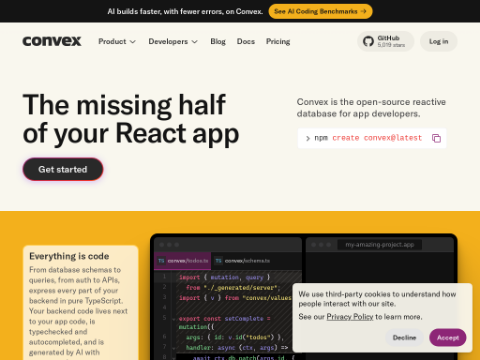On the second day of DeepSeek's Open Source Week, they unveiled DeepEP—a groundbreaking open-source EP communication library designed for training and inference of MoE (Mixture of Experts) models.
What is DeepSeek's Open Source Week, and why is it significant?
Let's set the stage. As a leader in the AI field, DeepSeek launched an Open Source Week to demonstrate its commitment to transparency, collaboration, and innovation. On the first day, they introduced FlashMLA, an extremely fast large language model architecture. Now, on the second day, they have released DeepEP, and trust me, this is a big deal.
Such open-source projects enable cutting-edge technologies to be widely accessible, allowing developers, researchers, and enterprises globally to build upon DeepSeek's innovations. Whether you're developing AI models for medical diagnosis, weather forecasting, or defense simulations, DeepEP provides the tools to support your work. All of these are available on GitHub, making it easy for anyone to participate and contribute.
So, why does this matter? In a world where AI competition is intensifying—especially with models like DeepSeek-R1 making waves—projects like DeepEP level the playing field. They give small teams and independent developers a chance to compete with larger players. Let's dive into what DeepEP brings to the table.
The Release of DeepEP: How This Library Can Change the Game
On February 25, 2025, DeepSeek excitedly announced the birth of DeepEP via a tweet on X (formerly Twitter).
Here's what they shared: DeepEP is "the first open-source EP communication library for MoE model training and inference." But what does this mean, and why should you care?
Efficient Full-Mesh Communication for MoE Models
Mixture of Experts (MoE) models are an AI architecture that improves efficiency and performance by assigning tasks to specialized "expert" models. However, training and running these models require seamless communication between nodes—whether within a single machine or across multiple machines. DeepEP addresses this issue with optimized full-mesh communication, ensuring smooth and rapid data transfer.
This efficiency is crucial for scaling AI models to handle large datasets, such as those used in medical research or climate modeling. DeepSeek's focus on this area shows their dedication to addressing real-world AI challenges.
Support for Single-Machine and Cross-Machine Communication Using NVLink and RDMA
DeepEP doesn't just provide basic communication functions—it also supports cutting-edge technologies like NVLink and RDMA (Remote Direct Memory Access) for single-machine and cross-machine connections. NVLink is NVIDIA's high-speed interconnect technology, while RDMA reduces data transmission latency. Both are game-changers for large-scale AI systems.
Imagine you're building a MoE model to predict global weather patterns. DeepEP's support for these technologies ensures your system can handle massive data transfers without bottlenecks, making it faster and more reliable. This is especially important in time-sensitive industries like disaster response or real-time analysis.
High Throughput and Low Latency Kernels
DeepEP not only connects nodes but also optimizes how data is transferred between them. The library includes high-throughput kernels for training and inference prefilling, as well as low-latency kernels for inference decoding. Simply put, this means DeepEP can quickly process large volumes of data during training and provide rapid responses during real-time inference.
For example, if you use DeepEP to drive a chatbot, the low-latency kernels ensure users receive quick responses, while the high-throughput kernels allow the model to continuously learn and improve over time. It's like equipping your AI project with a supercharged engine.
Native FP8 Dispatch Support
One of the most exciting features of DeepEP is its native FP8 (8-bit floating-point) dispatch support. FP8 is a newer data format that reduces memory usage and accelerates computation, making it ideal for large-scale AI models. By integrating this feature into DeepEP, DeepSeek prepares the library for next-generation AI hardware and algorithms.
As AI models become larger and more complex, this is increasingly important. With FP8, you can train and run models more efficiently, saving computational resources and energy—both critical considerations in our efforts toward sustainable technology.
Flexible GPU Resource Control
Finally, DeepEP offers flexible GPU resource control, enabling developers to overlap compute and communication tasks. This means your GPU can perform calculations while sending or receiving data, reducing downtime and improving overall performance.
If you manage a








